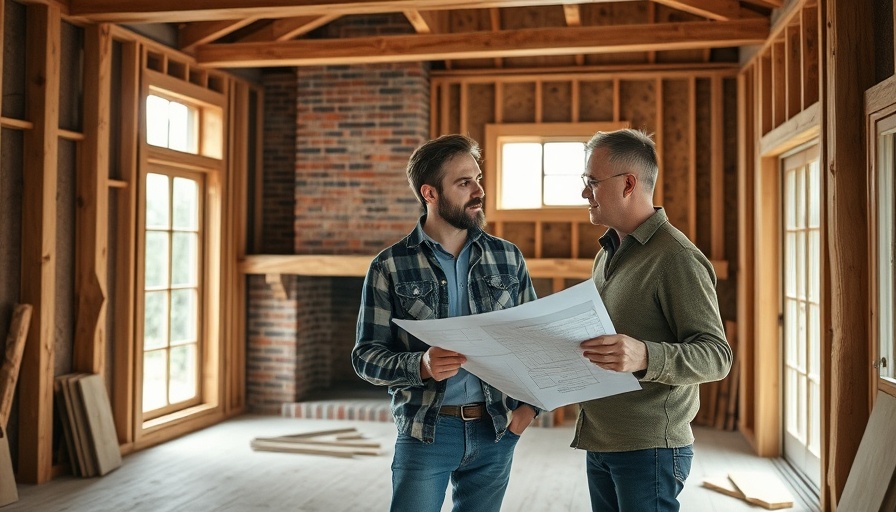
Transforming a Vintage Space: A Smart Approach
In the pursuit of modernity, a couple's vintage black-and-white en suite bathroom was on the brink of a much-needed transformation. This small space, located in a 1934 Colonial home just outside Boston, offered charm but fell short in functionality. With a pedestal sink that lacked storage and a cluttered shower-tub combo, they realized a redesign was imminent. Their vision: to create a sophisticated retreat that marries style with utility.
The Design Team's Vision
Design-build professionals Jason and Megan Hoffman stepped in to turn this vision into reality. Their innovative approach began with a strategic plan to push the wall shared with the bedroom into the space, allowing for a more generous layout. The reimagined bathroom now boasts a warm wood double vanity, a spacious low-curb shower with built-in seating, and a linen cabinet that enhances storage, addressing all the couple's needs.
Choosing Modern Midcentury Aesthetics
This remodel features a thoughtfully curated blend of white, black, and wood finishes, echoing the appeal of midcentury design. The clean lines and mixed textures not only increase visual interest but also enforce a modern elegance that feels fresh and inviting. Selecting materials that spoke to both durability and aesthetics became crucial in transforming this small a space into a modern sanctuary.
Size Does Matter: Maximizing Space Efficiency
The new bathroom design, now at 43 square feet, capitalizes on every inch. Most notably, the addition of the linen cabinet and the dual sink vanity creates an airy feel while providing essential storage without overwhelming the limited square footage. Smart layouts like this illustrate how even compact bathrooms can deliver functionality and style.
Inspiration for Your Own Bathroom Projects
For homeowners, whether in California or beyond, this project serves as inspiration for transforming similarly outdated bathrooms. While geographical styles may vary, the principles of smart design remain universal. Incorporating modern technology and efficient storage into your renovation plan can turn novice designs into chic locales.
Practical Tips for Your Bathroom Renovation
Thinking about a bathroom makeover? Here are actionable insights derived from this stunning transformation:
- Incorporate Dual Functionality: Consider fixtures that can serve dual purposes, such as a shower bench that doubles as seating.
- Utilize Vertical Space: Use cabinets and shelves that extend to the ceiling to maximize storage without sacrificing floor space.
- Choose Timeless Aesthetics: Select finishes and colors that won't go out of style; this will ensure long-term satisfaction with your design.
The Importance of Functionality in Design
While aesthetics play a crucial role in any renovation, functionality cannot be overlooked. As highlighted in the couple's story, a beautiful bathroom must serve its purpose effectively. In spaces where storage and utility predictably clash, innovative design solutions like cabinetry and efficient fixture placements help to bridge this gap. The outcome is a primarily focused yet stunningly stylish functional area.
Final Reflections: Achieving Balance in Your Home
This bathroom makeover not only accentuates the beauty of home renovations but also showcases the emotion tied to creating a sanctuary. Achieving a balance between function and style is key for homeowners looking to enhance their daily living experiences. Whether you’re knee-deep in remodeling or simply envisioning future enhancements, remember that your spaces reflect your lifestyle—design them wisely.
 Add Row
Add Row  Add
Add 




Write A Comment